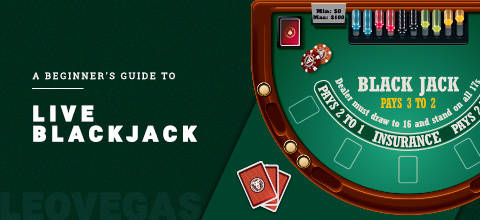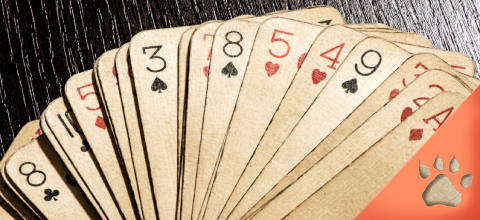Best Blackjack Strategies
At its heart, blackjack is a simple game. Yet when you dive into probability and how cards fall, it can suddenly become extremely complex. As a result, over time players have devised numerous strategies and betting patterns. From card counting to using the Fibonacci sequence when playing, there are countless ways to approach the game. Below, we give our guide to blackjack strategies.
Table of Content:
- Basic Blackjack Strategy
- Blackjack Card Counting
- No Bust Blackjack Strategy
- Blackjack Bankroll Management
- Blackjack Betting Strategy
- Blackjack Strategy: When to Hit
- Blackjack Strategy: When to Split
- Blackjack Strategy: When to Double Down
- Blackjack Strategies FAQ
Basic Blackjack Strategy
Basic blackjack strategy lets you know when to hit, split or stand with your hand. Without it, you may soon see your bankroll deplete. Before jumping into any major tactics and systems, it helps to memorize basic blackjack strategy and the main rules and terms of the game.
Know your Hands - Hard and Soft
First, you need to know the difference between a hard hand and a soft hand. A soft hand occurs when an ace is present. As an ace can either be a 1 or 11, it gives more flexibility and changes probability a little.
Hard hands come in two different types. There are ones with an ace and ones without.
If you have an ace, but it counts as 1, then it is a hard hand. For example, if you have a 10, 4 and ace, the hand is hard. The ace can't be 11 here, because you'd go over 21 (bust).
The next type of hard hand is when you have cards and can take another, but the extra card could make you go bust. For example, a 10 and 7 would be hard. With 17, you could take another card, but probability states it will push you over 21.
Blackjack Strategy for Hard and Soft Hands
Once you know how to tell the difference between hard and soft blackjack hands, you can apply the following strategies:
- Stand when you have a soft 20 or 21.
- Stand if you have a soft hand of 19 made up of ace and 8.
- Stand when the dealer has 2-6 and your hand is 12-16.
- Hit when the dealer has 7-ace and your hand is 12-16.
- Aces and 8s should always be split.
- If the dealer has 2-10 and you have 11, then double.
- You should hit or double on aces to 6.
As you can see above, hard and soft hands make a huge difference. When the dealer has a 7-ace, for example, they have a hard hand with an ace. Probability is against them and if you have a 12-16, fortune may favour you.
Blackjack Card Counting
Card counting is a technique used by blackjack players to see when the probability is on their side. If it turns to them, they can increase the bet to make more winnings. Should it be in favour of the dealer, they can pay less.
It works on the principle that the deck has an equal amount of high and low cards. High cards favour the player, while low cards benefit the dealer. The deck will also contain 7s, 8s and 9s which are considered neutral. By tracking which cards get dealt in early rounds, the player can assume the ratio of high or low cards left in the deck.
To do this, takes a great level of skill and memory. To assist, card counters often use a system, whereby they tag cards that appear.
- Low cards (2-6) are tagged as +1.
- High cards (10, picture cards, ace) get tagged as -1.
- Neutral cards (7,8,9) get tagged as 0.
The higher the total, the more low cards have been played. This favours the player, as it means more high cards must remain in the deck. When the cards have a negative score, most of the high cards have been handed out, so it favours the dealer.
No Bust Blackjack Strategy
The No Bust strategy is one some players choose to employ. It involves staying in the game even if the player has a busting hand. For example, if they have a hand of between 12 and 16, known as a stiff hand - they are more likely to go bust. But here, they would stick and hope the dealer goes bust instead.
Not many professional players would employ this strategy. Firstly, it is quite boring! Blackjack is a game made to entertain and it can quickly wear thin. Secondly, probability states that even if you hit when you have a stiff hand, you have a better chance of winning than if you stick. This applies even when the dealer looks like they have a strong hand.
Blackjack Bankroll Management
It's important to manage a blackjack bankroll effectively. Otherwise you'll find your time at the table short as your money quickly slips away.
Break your bankroll down into units. These become your standard bet. The more units you have, the less risk you have of losing your bankroll. Make sure the units are sized so that they are only made of amounts you can afford to lose.
Experienced players often start with 1,000 units. Thus, if you only have $1,000 to bet for the month, your unit bet will be $1.00. Of course, you can adjust this, but you raise the risk of loss. Make sure you gamble responsibly, only with what you have set aside.
Blackjack Betting Strategy
Several betting systems are designed as a means of managing your bankroll. Most people employ these not only to increase the chance of winning, but to recover losses. The most popular are listed below.
Martingale – A technique in which you keep doubling the value of your initial bet. There are variations on this, and it is also used outside blackjack games.
D'Alembert – A technique based on the Martingale system. After each loss, the player raises their bet by one unit. After each win, they will lower the bet by one unit.
Fibonacci – A way of betting that follows the Fibonacci sequence, which starts 0, 1, 1, 2, 3, 5, 8. After two wins of the initial stake, the amount bet then goes to three times the stake. After two more wins at this total, it goes to five times the initial amount, and so on.
Parlay – This system is a positive progression system. Every time you win, you increase your wager using only the funds that you have won. Essentially, you are using the money from the house to gamble.
Oscar's Grind – A low-risk strategy that involves making one unit of profit every cycle.
2-1-2 – A simple strategy that starts by betting two units. When a hand gets won, one unit is bet on the next round. If that wins, the player places two units. The next winning hand adds three and an extra unit for each winning hand.
1-3-2-6 - Blackjack betting strategy 1-3-2-6 is a positive progression system that defines how much you need to stake after a winning hand. This strategy is fairly simple to understand because the increments are included in the name, i.e. you bet 1, 3, 2 and 6 units.
Blackjack Strategy: When to Hit
- Your hand is 11 or less
- The dealer's upturned card is 2 or 3. Hit on 12 or less.
- The dealer's upturned card is 4, 5 or 6. Hit on 11 or less.
- The dealer's upturned card is 7-K. Hit on 16 or less.
- The dealer's card is an ace. You will probably get beaten. If you want to take a risk, hit on 17 or less.
Blackjack Strategy: When to Split
It is advisable to split in following situations:
- If your hand consists of two aces, then split. Some casinos may only give you 1:1 after splitting, so check this.
- If your hand is two 8s, then split. Why? 16 is not a great total, so it is best to have two separate attempts. There are arguments that if the dealer shows a 9 or 10 you shouldn't split.
Check for more advices on when to split in our guide.
Blackjack Strategy: When to Double Down
Below are some of the cases when player should double down when playing a blackjack.
When you hold an 11.
When you have a 10 and the dealer has 4, 5 or 6.
You have a 9 and the dealer has 5 or 6.
Read more about when to double down in separate article.
Blackjack Strategies FAQ
What is the best blackjack strategy?
The best blackjack strategy is to know when you should hit, split or stand. This depends on both your hand and the dealer's. Generally, you should hit if your hand is less than 16 though this is a very simple approach.
Can you win blackjack with basic strategy?
It is possible to win blackjack without any strategy, as it is essentially a game of luck. However, the basic strategy may shift probability in your favour and provide you with better odds.
What is the 2 1 2 blackjack strategy?
This is a very simple method of betting and managing your bankroll. You start by betting two units. Should you win the hand, you then bet one unit on the next round. If that wins, you then revert to two. The next winning hand sees you add three and one additional unit for each hand you win.
Does the Martingale strategy work in blackjack?
The Martingale strategy involves doubling your hand every time you get a win in blackjack. The theory is that it helps you recoup losses. It works best in games that have a 50% chance of win or loss, where rounds are not influenced by the outcome of previous ones. However, blackjack is a game of chance and no strategy will ever guarantee a win.
Is there an optimal blackjack strategy?
There is no strategy for a guaranteed win. However, you can increase your chances by knowing the blackjack basic strategy and then applying a betting system that suits your bankroll.

How To Play Against a 10 Upcard
Discover the various strategies you can use to play against a dealer’s 10 upcard in blackjack.

A Beginners Guide to When to Double Down in Blackjack
In this comprehensive blackjack guide, we are going to look at when to double down in blackjack, the rules for doing so, and when doubling down in blackjack is not a good idea.

To Split or Not to Split: Playing a Pair of 6s in Blackjack
We will explore the art of splitting 6s and discuss when it could be considered the best play, and times when it would be best to hit.

Blackjack Card Counting Guide
Check out our latest guide to learn all you need to know about card counting in blackjack.